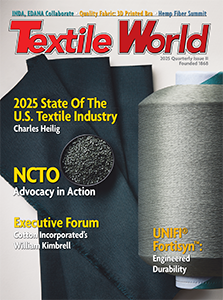OVERLAND PARK, Kan. — December 5, 2016 — For fall/winter 2017-18, the newest waterproof membrane technology from eVent® fabrics — eVent DVexpedition — is being introduced by Flylow in its premiere Z Line products, the Lab Coat and Compound Pant. DVexpedition is the newest Direct Venting (DV) membrane from eVent fabrics, which introduced its original patented waterproof and air permeable ePTFE technology in 1999. DVexpedition is eVent’s most durable, air permeable and waterproof membrane, purpose-built for skiers and adventurers who continually push the limits of their outerwear. The new technology debuts at Outdoor Retailer from January 10-12, 2017, at Flylow (Booth #10) and eVent fabrics (Booth 155-313).
“Flylow takes performance seriously,” said Chad Kelly, Director of Sales and Product Line for eVent fabrics. “By adopting eVent DVexpedition into next winter’s line up, they’ve chosen to ensure that the most dedicated skiers will be comfortable in any and all conditions. Ultimately, DVexpedition offers fully waterproof protection and best-in-class breathability achieved only through an air permeable membrane system. This combination, along with durable construction, guarantees a weatherproof solution that devoted skiers demand.”
DVexpedition combines 100 percent waterproof protection with eVent’s patented air permeable Direct Venting technology to allow body heat and water vapor (sweat) to easily dissipate and help keep users dry and comfortable. Its high moisture vapor transfer rate (MVTR) — a common measurement of breathability — combined with air permeability — the ability for air to pass through a fabric or membrane — creates the best possible breathable performance in waterproof shells.
Dan Abrams, co-founder of Flylow said, “The Lab Coat and Compound Pant are designed from the ground up for the skier who wants to hit everything, every day. This hard-charging and super air permeable kit delivers a Flylow level of true toughness and waterproofness. It’s burly enough for riding lifts in crushing storms, but light and breathable enough to wear while you’re bootpacking up the headwall.”
DVexpedition must meet eVent’s high minimum internal specifications, according to Kelly. On average, three-layer DVexpedition laminates featuring durable, robust face fabrics earn eVent’s highest waterproofness rating of a 30-meter water column. Breathability, as measured by moisture vapor transfer rate over 24 hours (MVTR) is 10,000 grams per square meter (JIS B1 test method), and air permeability is rated at 0.06 cubic feet per minute.
eVent DVexpedition is the newest of three technologies in eVent’s series of waterproof and air permeable membranes and fabrics. DValpine — adopted from the company’s original air permeable and fully waterproof membrane — is the time-tested, versatile solution in the collection, offering balanced all-weather protection and high breathability for a broad range of activities. DVstorm is designed to deliver superior breathability in lightweight waterproof shells, and is ideal for highly aerobic activities that quickly generate heat and sweat, such as light and fast climbing, hiking, running and cycling.
All eVent waterproof membranes are fully manufactured in Lee’s Summit, Mo. The ePTFE membranes are finished with eVent’s patented oleophobic and hydrophobic treatment that protects the membrane from contamination but also retains its porous, air permeable structure.
New Flylow products with eVent DVexpedition
Flylow’s Z Line collection offers high performance products designed for long days in the mountains. Alpine skiers benefit from technical features, waterproof and breathable fabrics, and lightweight, streamlined designs.
Flylow Lab Coat
Using eVent’s new DVexpedition technology and fabric, the Lab Coat brings a new level of waterproofness and durability to the hill, whether you’re in the backcountry or at the resort. Key features include high pockets for compatibility while wearing a pack, helmet-compatible hood, removable powder skirt, YKK waterproof zippers, fully-taped seams and 14-inch pit zips, all which make this lightweight, meticulously designed jacket ready for anything you can throw at it. Avg. weight: 604 grams, MSRP $525.00.
Flylow Compound Pant
Flylow’s Compound Pant features eVent DVexpedition, an innovative, air-permeable technology that allows instant venting of heat and sweat that can build up in your apparel. With cross flow vents, sweaty legs don’t stand a chance on uphill skin tracks. This is one tough pant but surprisingly compressible, too, even with features like Cordura-reinforced cuffs, 7/8ths length side zips, powder skirt attachments, and four pockets. Avg. weight: 745 grams, MSRP $475.00.
Posted December 6, 2016
Source: Flylow




